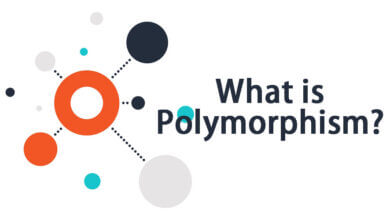What Is Practicum? | A Complete Guide

If you’re an undergraduate or graduate student, you might have heard about practicum, which is also known as a work placement in the UK.
In this article, we’ll dive into the benefits of practicum, how it works, and why you should consider participating in one.
But here, the major point to discuss is what practicum actually is?
What is a practicum?
A practicum is a course that provides students with hands on experience in a specialized field of study, giving them the opportunity to apply previously or concurrently learned theories and knowledge in real-world scenarios.
Practicums are often offered in specialized fields such as healthcare, education, business, or social work. They are intended to allow students to apply theories and knowledge learned in the classroom to the real world.
Now take a glance at how does practicum works and what the purpose of it?
Purpose Of Practicum
Practicum’s primary goal is to bridge the gap between classroom learning and real-world application. It allows students to carry out feasible experiences in their field of study, put their theoretical knowledge to the test, and learn new skills.
Practicums are typically a period of supervised practical work that can last anywhere from a few weeks to a semester or academic year. During this time, students work with a mentor or supervisor who gives them feedback and guidance on their work.
However, some common elements of practicum include:
- Developing a learning plan or goals for the practicum experience
- Participating in regular meetings with a supervisor or mentor
- Completing assigned tasks or projects in the field of study
- keeping a journal or log of your practicum experience
- Participating in reflective exercises or discussions to process the learning
The four elements of a successful practicum are learning objectives, place, person, and time.
Practicum in Education
The purpose of a practicum in education is to provide students with hands-on teaching experience. During this program, students will have the opportunity to plan and deliver lessons, evaluate their performance, encourage their engagement in the learning process, and reflect on their teaching experience.
Types of Practicum
Practicum can take many forms, depending on the program and industry. Here are some common types of practicum:
- Clinical Practicum
- Teaching Practicum
- Legal Practicum
- Business Practicum
Clinical Practicum
Clinical practicum is common in medical and health-related programs, where students gain hands-on experience working in hospitals, clinics, or other healthcare facilities.
A clinical practicum is a primary academic requirement in a graduate degree social work education plan. It involves the student in supervised clinical social work practice, including direct client interaction, and gives them a chance to put what they have learned in class into practice.
Teaching Practicum
Teaching practicum is common in education programs, where students gain experience in the classroom by working with a mentor teacher.
The initial goal of the teaching practicum is to give students classroom teaching experience. The instructors who are in charge of the courses where the practicals are held provide the students with guidance and supervision.
Legal Practicum
Legal practicum is common in law programs, where students gain practical experience by working in law firms, courts, or other legal settings.
Business Practicum
Practicums are on-the-job experiences that allow you to notice and document how working experts carry out their duties. You will have finite participation in tasks that will be performed under the supervision of program professors or on-site staff.
During a practicum, students collaborate with client companies to work on business-related projects that involve conducting research and proposing solutions to address their challenges and issues.
Benefits of Practicum
Practicum offers numerous benefits to students, educational institutions, and employers alike. Here are some key benefits:
- For Students
- For Educational Institutions
- For Employers
For Students
- Gain firsthand experience in their field of study.
- Develop and refine job-related skills.
- Build professional networks and relationships.
- Enhance resumes and job prospects.
- Test and apply theoretical knowledge in real-world settings.
For Educational Institutions
- Strengthen the curriculum by incorporating real-world learning experiences.
- Build partnerships with employers and industry professionals.
- Enhance students’ career readiness and employability.
- Boost institutional reputation and standing.
For Employers
- Opportunity to mentor and train future professionals.
- Access to a group of talented and motivated students.
- Build relationships with educational institutions.
- Potentially reducing recruitment costs by hiring from within the pool of practicum students.
How does a Practicum Differs from an Internship or Apprenticeship?
While practicum, internship, and apprenticeship are all work-based learning experiences, there are some key differences:
| Practicum | Internship | Apprenticeship |
| Part of an academic or vocational program | Optional, standalone work experience | A formal training program for a skilled trade or craft |
| Structured and supervised by a faculty member or mentor | Often structured and supervised by an employer | Structured and supervised by an employer or industry association |
| Focuses on practical skill development and application of theoretical knowledge | Focuses on career exploration and skill-building | Focuses on developing specific job-related skills |
| Usually unpaid | Can be paid or unpaid | Often includes a paid work component |
Practicum Courses
Practicum courses are an excellent plan for students to carry out realistic experience and make valuable connections in their field, which can help them to launch successful careers after graduation.
Numerous universities provide practicum courses that blend various disciplines’ academic and experiential learning opportunities. These courses enable students to acquire skills, knowledge, and values through practical experiences and reflection.
How to Write a Request for a Practicum Placement Letter?
- Start with a professional salutation, such as “Dear [Recipient’s Name],”
- Introduce yourself and explain your academic program and the requirements for your practicum placement. For example, you could say: “My name is [Your Name] and I am a student in the [Program Name] program at [School Name]. As part of my degree requirements, I am required to complete a practicum placement in [Field of Study].”
- Explain why you are interested in the particular organization or company and what you hope to gain from the practicum experience. For example, you could say: “I am particularly interested in [Organization/Company Name] because of its reputation for excellence in [Field of Study]. I am excited about the prospect of gaining practical experience and learning from the talented professionals who work there.”
- Request a practicum placement and provide your availability. Be sure to include the dates you are available and any other scheduling constraints you may have.
- Thank the recipient for considering your request and express your willingness to provide additional information if needed.
- Finish the letter with a formal salutation, like “Sincerely” or “Best regards,” followed by your name and contact information.
Here is an example template for the Practicum Placement Letter request:
Dear [Recipient’s Name],
I am [Your Name] and I am a student in the [Program Name] program at [School Name]. As part of my degree requirements, I am required to complete a practicum placement in [Field of Study].
I am particularly interested in [Organization/Company Name] because of its reputation for excellence in [Field of Study]. I am excited about the prospect of gaining practical experience and learning from the talented professionals who work there.
I am writing to request a practicum placement at [Organization/Company Name]. I am available from [Start Date] to [End Date] and am willing to work full-time during this period. If you have any other scheduling constraints, kindly let me know and I will perform my best to accommodate them.
Thank you for considering my request. Please do not hesitate to contact me if you require any more details.
Sincerely,
[Your Name]
[Your Contact Information]
Conclusion
Practicum is a vital component of many academic and vocational programs, providing students with an opportunity to pick up practical, first hand experience in the field of study.
Participating in a practicum can be a valuable learning experience for students, offering them the chance to apply their expertise and skills in a real-world setting, make connections in their field, and build confidence in their abilities. If you’re interested in pursuing a practicum, talk to your academic advisor or program coordinator to learn more about the opportunities available in your field of study.





